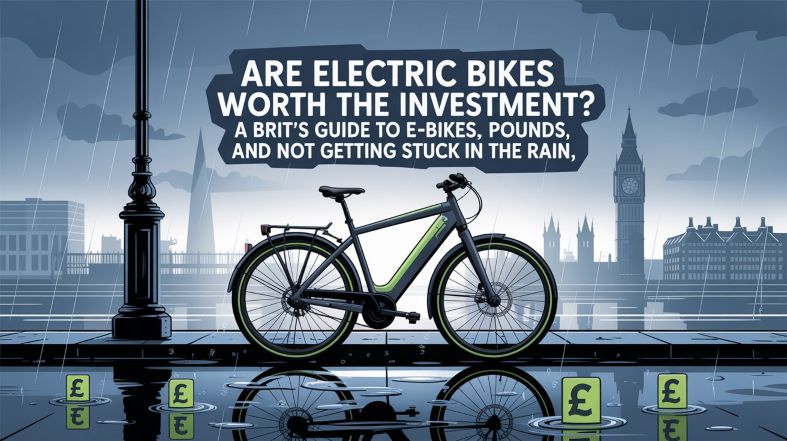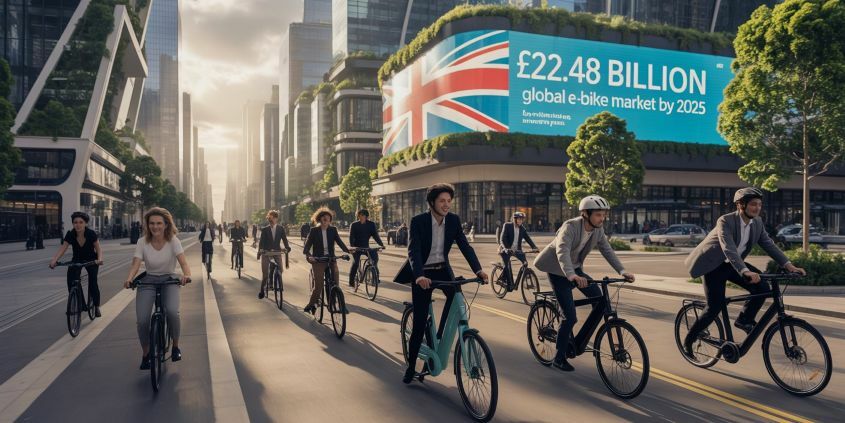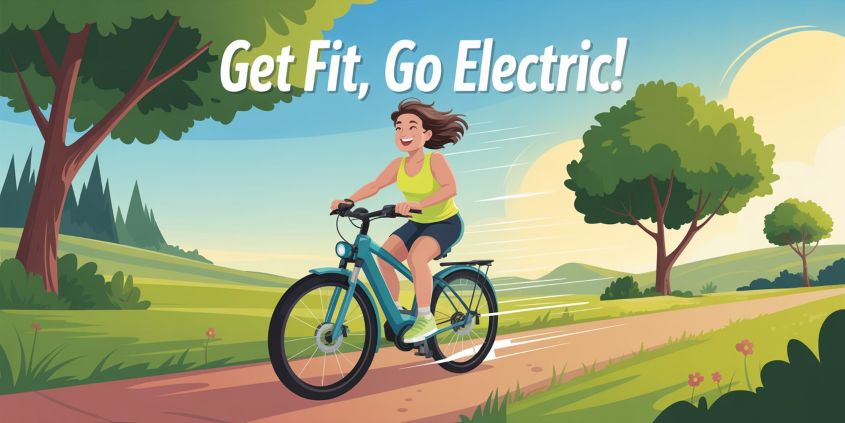The face of someone who just remembered bikes don’t have seatbelts
Choosing Your E-Bike: When Performance Means Not Dying
My journey back to cycling began with delusions of grandeur. I imagined myself gracefully gliding through the countryside, perhaps with a scarf billowing behind me like some French film star. Reality hit harder than my bum hit the saddle.
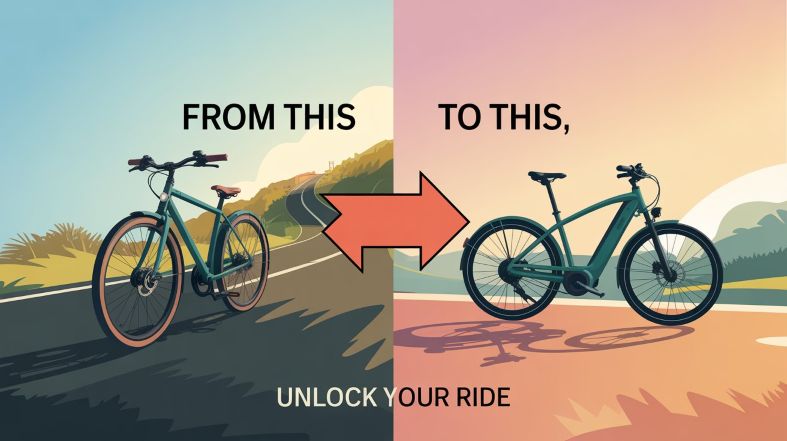
Expectations vs. the reality your body demands
After my disastrous test ride on a regular bike (during which a group of elderly mall walkers overtook me), I embraced what some cycling purists call “cheating” – I went electric. Yes, I bought an e-bike, and no, I don’t care if you think that’s cheating. I call it cheating with science, and it’s glorious. You see, getting back into cycling when you’re older is not easy, and yes, you may give a derisory laugh, it really isn’t. I live in Sheffield, which is very hilly. It’s not actually much fun riding up big hills on a normal bike when you’re over 50.
Comfort Over Glory
If you’re returning to cycling after years away, prioritise comfort over speed. Your tailbone will thank you. Look for bikes with wider seats, upright positioning, and yes, maybe even some electrical assistance.
When choosing a e-bike, remember this golden rule: if it makes your nether regions feel like they’re staging a protest, it’s the wrong bike. Test several models. Sit on them. Wiggle around. Ignore the judgmental stares from the shop employees who clearly cycle 200 miles before breakfast.
First Ride Chaos: It Went Badly!
Expectations vs. Reality
What You Expect
- Graceful gliding through the neighbourhood
- Wind in your hair (under your helmet, safety first)
- Instant fitness and joy
- Admiring glances from neighbours
- Feeling like a carefree child again
What Happens
- Moving like a child riding a bike for the first time
- Sweat in places you didn’t know could sweat
- Ascreaming obscenities at your brain
- Concerned glances from neighbours
- Feeling like you need an ambulance
My first actual ride back from Halfords was pretty amazing. I had to go up quite a steep hill, I had just ridden on the flat up until then, but I rode up it effortlessly, and I was smiling quite a lot as it was, it was a bit of a life changer, was it fast? No, but I crawled up a hill, I would never have made it up riding on a normal bike.
Remember: Everyone looks stupid their first time back on a bike. The difference between success and failure is whether you go for a second ride.
Safety Tips (That You’ll Ignore Until You Taste Pavement)
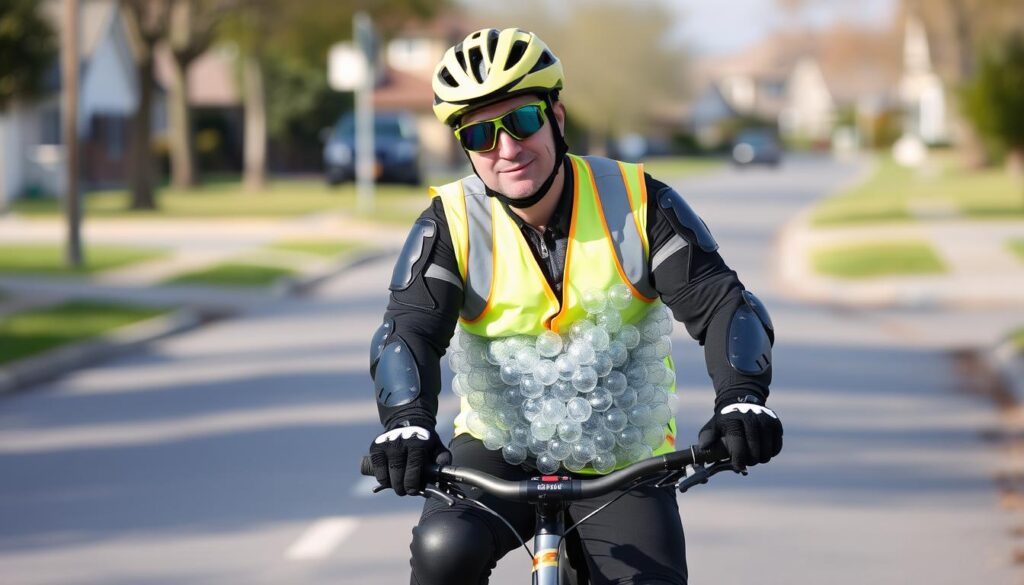
How your mom thinks you should dress vs. how you actually dress
WARNING: Squirrels are agents of chaos. They will wait until you’re at maximum speed before darting directly into your path, causing you to swerve dramatically and question your life choices.
Let’s talk safety, which is admittedly the least funny part of cycling until you’re telling stories about your spectacular crashes later. Here are some tips that I learned the hard way:
- Don’t rush unless you enjoy tasting pavement. That shortcut across gravel? It’s a trap.
- Wear a helmet, you beautiful idiot. Yes, even if it gives you helmet hair. Brain injuries aren’t sexy either.
- Make eye contact with drivers. They’re scrolling through Instagram and don’t see you.
- Assume all car doors will open precisely when you pass them. They’re waiting for you.
- Dress like your mom still picks your outfits. Reflective gear, proper shoes, and padded shorts if you value sitting down ever again.
Protect Your Dignity (And Everything Else)
Your body isn’t as bouncy as it was at age 12. Invest in proper safety gear that will keep you looking ridiculous but uninjured.
The difference between a fun cycling story and a cautionary tale is about 2mph and one poorly-timed pothole.
Fitness Benefits (The Sarcasm Edition)
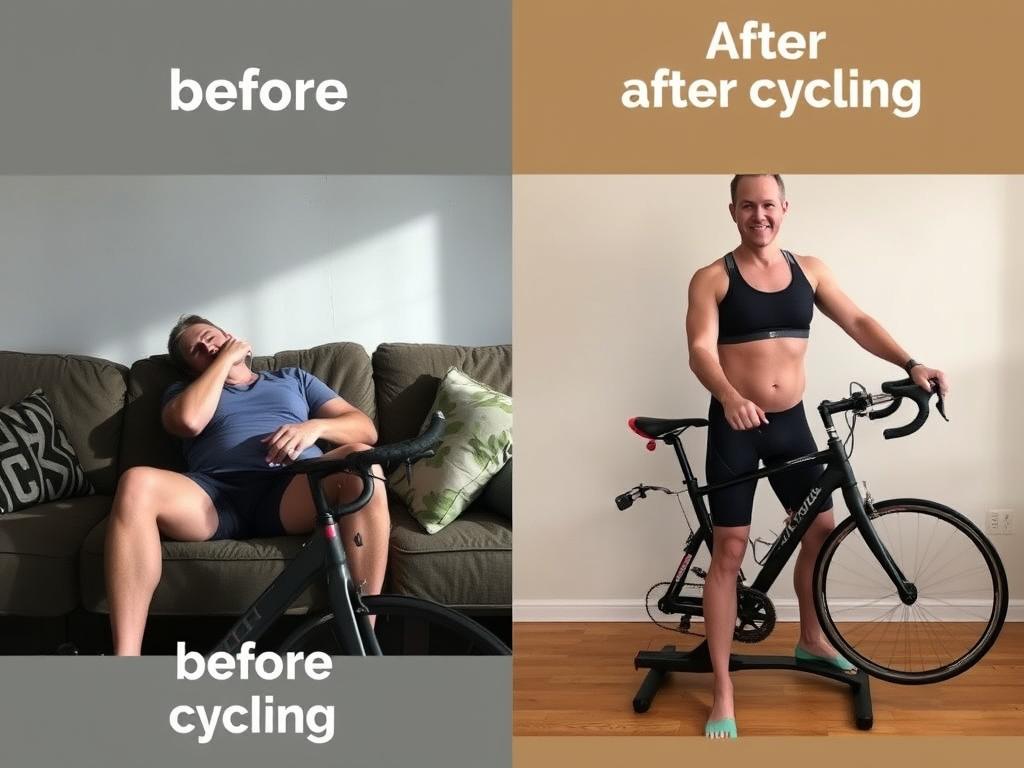
The transformation you were promised vs. what you get
Let’s talk about the “amazing” physical transformation that awaits you. By “amazing,” I mean you’ll eventually be able to climb stairs without making dramatic sighing noises.
Signs Your Fitness Is Improving (Sort Of)
- Your legs scream slightly less. They’ve moved from “bloody murder” to “mild protest.”
- You can carry shopping without plotting arson. Those grocery bags used to be your nemesis.
- You only need to lie down for 20 minutes after a ride instead of declaring yourself legally deceased.
- You’ve developed weird tan lines that make it look like you’re wearing knee socks at all times.
- You find yourself saying things like “nice cadence” and immediately hating yourself for it.
The first time you overtake someone else on a bike path feels like winning the Tour de France. Even if they’re 85 years old and have stopped looking at ducks.
The truth is, cycling is one of the few exercises where you can sit down while doing it, which automatically makes it superior to running. Your joints will thank you, even as your muscles plot their revenge.
Mental Health and Joy: Finding Your Inner Child (Who Swears More Now)
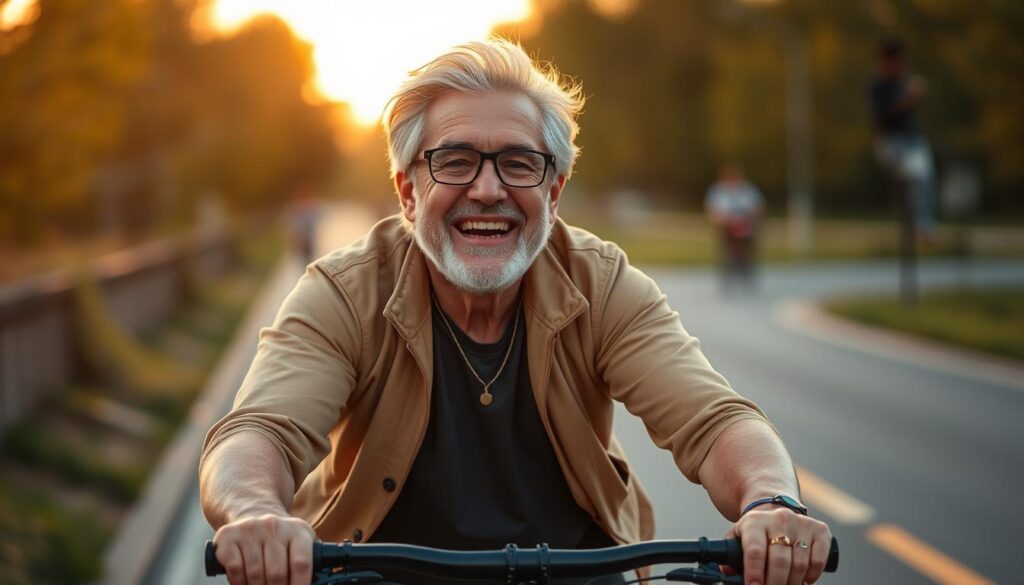
That rare moment when everything clicks and you remember why you started
Here’s the part where I get unexpectedly sincere: cycling is magic for your mental health. There’s something about the combination of movement, fresh air, and the constant fear of death that really clears your head.
What Happens to Your Brain on Bikes
- Your brain stops yelling about emails. It’s too busy making sure you don’t hit that pothole.
- You experience moments of pure, childlike joy. Usually on downhills.
- You develop a weird appreciation for good road surfaces. “This asphalt is SMOOTH!”
- You start noticing things in your neighbourhood that you never saw from a car.
- You feel smugly superior to car drivers stuck in traffic (until it rains).
For all the jokes, there’s a moment on every ride where everything clicks. Your breathing syncs with your pedaling, your body remembers what to do, and suddenly you’re 12 again – but with better decision-making skills and a more extensive vocabulary of swear words.
Cycling is the closest adults get to flying without leaving the ground. For a few moments, you’re weightless, worryless, and wondering why you ever stopped.
Final Thoughts: Just Ride the Bloody Thing
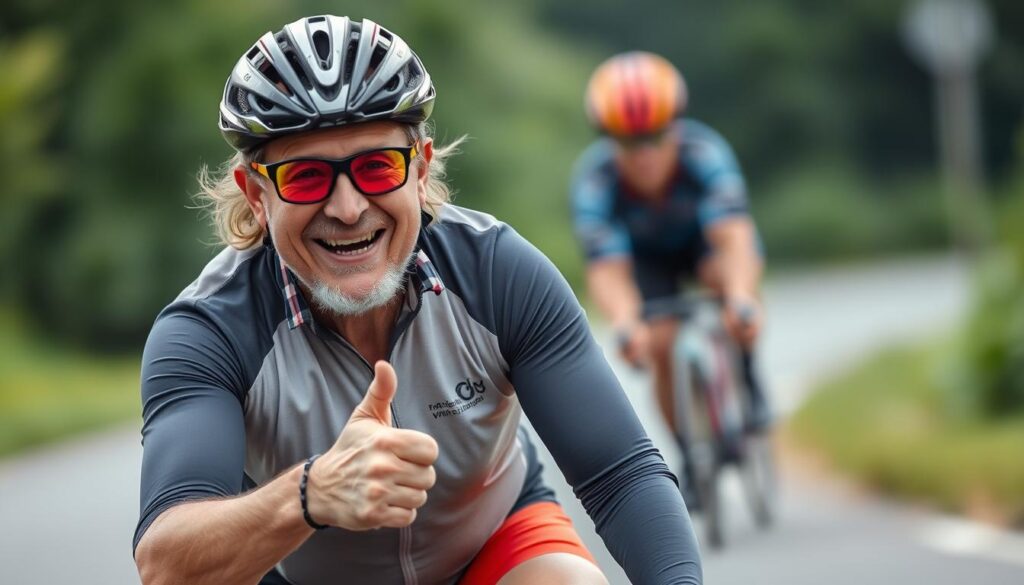
This could be you: looking ridiculous but feeling fantastic
Progress in cycling is slow, clumsy, and occasionally hilarious. You will look stupid. Your body will complain. Neighborhood dogs will chase you. Children will outpace you. But none of that matters.
What matters is that you’re moving, you’re outside, and you’re doing something that brings you joy (eventually). So adjust your helmet, embrace the wobble, and just ride the bloody thing.
Why It’s Worth It
- Freedom that cars can’t provide
- Smugness that comes from eco-friendly transport
- Thighs that eventually stop burning
- Wind in your face that isn’t from running to catch a bus
- Stories that begin with “You won’t believe what happened on my ride today…”
The Realities
- You will fall at least once
- Wind is worse than rain, and it finds cyclists first
- Bike seats are designed by sadists
- Hills are always steeper than they look
- You’ll become the person who talks about bikes at parties
Ready to Embrace the Wobble?
Whether you go electric, second-hand, or full carbon fibre (show-off), the important thing is getting back on two wheels. Your inner 12-year-old is waiting.
Remember, no one looks cool in a helmet, but everyone looks cool riding a bike – it’s one of the universe’s great paradoxes. So, embrace the journey, laugh at yourself often, and I’ll see you on the bike path. I’ll be the one making the dying whale noises on the hill.
